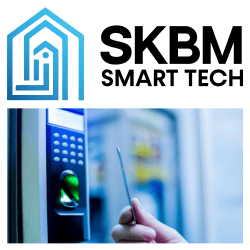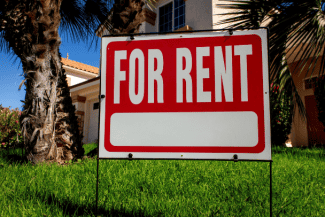States Are Lifting COVID-19 Stay-at-Home Orders: Here’s What You Should Be Doing

So, what’s next?
First, we strongly suggest reading the Centers for Disease Control’s guidance for shared or congregate housing about how to safely resume operations, as well as follow the recommendations of your local health and city officials.
Then, address the actions we believe you should take with your marketing, leasing, management, and revenue processes. In this blog, we’ll recommend the things you should do in each category to ensure that your apartment community succeeds as our country reopens.
Marketing
Step #1: Act Now
In our view, your digital advertisements are more important now than ever. With nearly every state having removed some restrictions put in place earlier, potential residents are actively resuming their apartment hunt. Even if people are moving in lower volumes, the time to take action in your marketing is now, especially with the historical slowdown most markets experience around the school year impending. The last thing you should do is wait to act until August or later, when things may be slower.
Step #2: Adjust Ad Spend
As demand increases, you may also experience more turnover within your community. In times like these, it’s important to increase your ad spend so you can get more traffic to your website. That’s why it’s important to avoid building a fixed advertising budget when you develop your marketing plan.
Step #3: Re-evaluate Marketing Channels
Take a look at your paid ad sources on a cost per lease basis to know which channels are succeeding, and which ones aren’t. To make the most out of your marketing budget, you may need to reallocate your money to marketing sources that are actually converting into leads. The RentVision Platform gives you a quick glance at your analytics and how your marketing efforts are performing so you can make informed decisions.
Step #4: Emphasize Virtual Content
One of the lasting effects of COVID-19 is that consumers are now more comfortable with making contactless purchases. RentVision’s websites feature walkthrough videos and floorplan-specific photography, so potential residents can see your community without having to drive there. With most seekers still unsure about going out into public, pushing your virtual content is a great way to boost your community during their search.
Leasing
Step #1: Offer Online Tours
Even as states begin reopening, the CDC still recommends limiting unnecessary exposure in closed spaces. So, while it may be tempting to resume admitting in-person tours once again, you have to keep in consideration apartment shoppers who may still be uncomfortable with in-person contact. Offering online tours is the safest option for them. Two solutions we provided our clients during the outbreak include the option to add an announcement banner to their website’s homepage that highlights virtual options, and the ability to schedule virtual appointments.
Step #2: Increase Hold Time
If you currently have or are about to have lots of vacancy, you may want to increase the amount of time you hold a vacant unit for a prospect, so that they don’t slip through the cracks. Your RVO compared to your Target RVO can help you set this number. If your RVO is below Target RVO, for example, you should hold units longer.
Here’s a guideline you could follow for how long you should hold a vacant unit based off your RVO and Target RVO:
| RVO Compared to Target RVO | Maximum Vacancy Hold Period |
| RVO ≥ Target RVO | 4 weeks |
| RVO ≥ Target RVO -1% | 5 weeks |
| RVO ≥ Target RVO -2% | 6 weeks |
| RVO ≥ Target RVO -3% | 7 weeks |
| RVO ≥ Target RVO -4% | 8 weeks |
| RVO ≤ Target RVO -4% | 9+ weeks |
Management
Step #1: Sanitize, Sanitize, Sanitize
If you haven’t done so already, you should reorganize your cleaning routines, as well as hours of operation, for common areas in your community. You should make sure you have more than enough of the supplies you need to maintain proper sanitation. Setting up hand washing stations, or other measures, are a part of this new normal that we’re all adjusting to.
Also, keep in mind that current residents may become resentful of paying for amenities they aren’t allowed to use, or feel safe to use. If you can open your gym or your pool while following proper protocols, you should do it. Just make sure that you’re doing your part to keep things clean.
Step #2: Speed Up Turnovers
This may put a strain on how your community typically operates, but it’s important to turnaround and clean units within a 7-day timeframe. Faster turnaround times increases your leasing velocity, which will set you up for success in a post-COVID environment.
Not only should you speed up turnover time, but you also have to ensure your vacant units are magnificent. Potential residents want to feel like they’re moving to a community that’s safe, clean, and well-maintained.
Step #3: Increase Resident Retention
While states across the country see an increase in mobility once again, there’s still a segment of the population who remain leery about jumping back out into public and getting back into their normal routines. This is something your team should pay close attention to, especially if there’s residents in your community who have leases due soon. If they may not be ready to pack up their lives and move, is there something you could do to entice them to stay?
This is an opportunity to get creative with your renewals. Some ideas could include offering free carpet cleanings, or allowing residents to make things more homey by giving them the opportunity to paint their walls. Or, you could offer smart amenities like a Nest thermostat, which promises to save residents money on their energy and utility bills. This could be something that recruits future residents, too.
Step #4: Differentiate Your Amenities
Offering a unique amenity that’s not available at competing communities is an important part of your marketing. Increasing your visibility online, especially as we’re seeing an increase in demand, is key, but you can also take this as an opportunity to enhance your community’s offerings.
One idea almost nobody is grabbing a hold of is the electronic fitness trend. Peloton bikes are hugely popular, and allow residents to have live, personal biking classes. There’s also a new product called the Tonal, which gives residents a lifting machine with a virtual coach. Amenities like these could become the difference in both keeping existing residents and acquiring new ones.
Revenue
Step #1: Implement Price Discounts
An easy way to enhance your community’s occupancy is to offer inventory discounts. We strongly recommend this tactic when your RVO is short of your Target RVO. The specials or concessions you offer depend on the severity of your vacancy crisis.
This table features a guideline on universal specials you could apply:
| RVO Compared to Target RVO | Specials |
| RVO ≥ Target RVO | None |
| RVO ≥ Target RVO -1% | 1-2% off monthly rent, or 1/2 off first month rent |
| RVO ≥ Target RVO -2% | 3-4% off monthly rent, or 1/2 off first month rent |
| RVO ≥ Target RVO -3% | 5-6% off monthly rent, or 3/4 off first month rent |
| RVO ≥ Target RVO -4% | 7-8% off monthly rent, or first month rent free |
| RVO ≤ Target RVO -4% | 9%+ off monthly rent, or 1+ months rent free |
If you’ve had unit(s) remain vacant throughout the COVID-19 pandemic, you could also apply discounts specifically for them. Here’s a guideline on how to go about that:
| Unit Vacancy Duration | Specials |
| 30 days | None |
| >30 days | 1-2% off monthly rent, or 1/2 off first month rent |
| >45 days | 3-4% off monthly rent, or 1/2 off first month rent |
| >60 days | 5-6% off monthly rent, or 3/4 off first month rent |
| >75 days | 7-8% off monthly rent, or first month rent free |
| >90 days | 9%+ off monthly rent, or 1+ months rent free |
Step #2: Lower Renewal Rates
To keep renewals high and occupancy strong, you may want to ensure that your renewal rates are at or below market rates. Look at this way: how would you feel as a loyal Starbucks customer if you had to pay more for your favorite latte than the price listed on the board? That is essentially what you’re doing to your residents when you make them pay more than what a new resident has to pay.
If you have made the decision to lower your market rates for new residents, then you may have to consider lowering the rent price on renewals in order to help retain those residents.
Conclusion
No one anticipated a health crisis like COVID-19. The goals you once had in place for your apartment community have certainly changed now. As states reopen and demand for renting apartments increases, we believe that communities who are adaptive and willing to alter their marketing, leasing, management, or marketing procedures may be best positioned to succeed moving forward.
Source: RentVision.com















 Accessibility
Accessibility